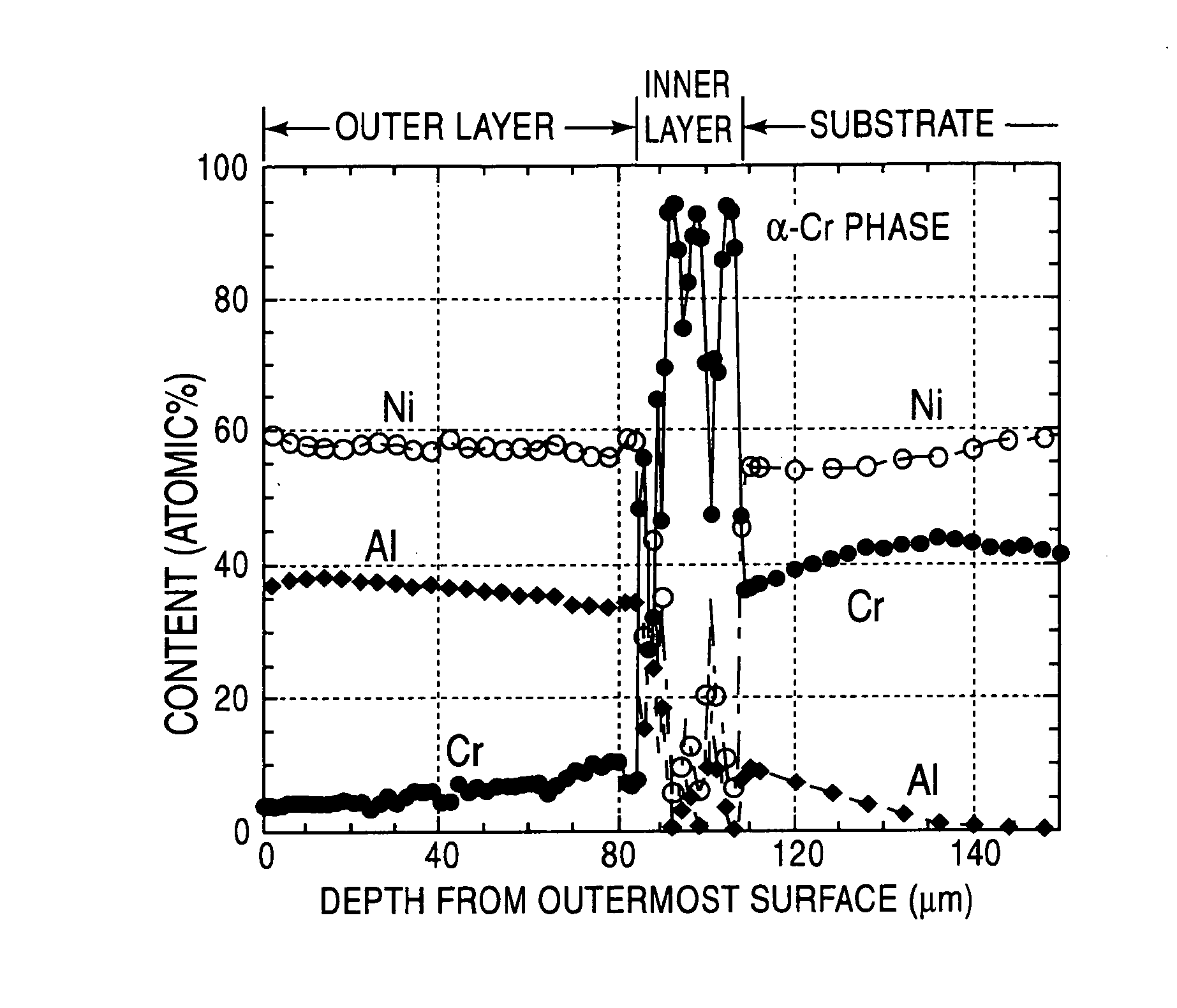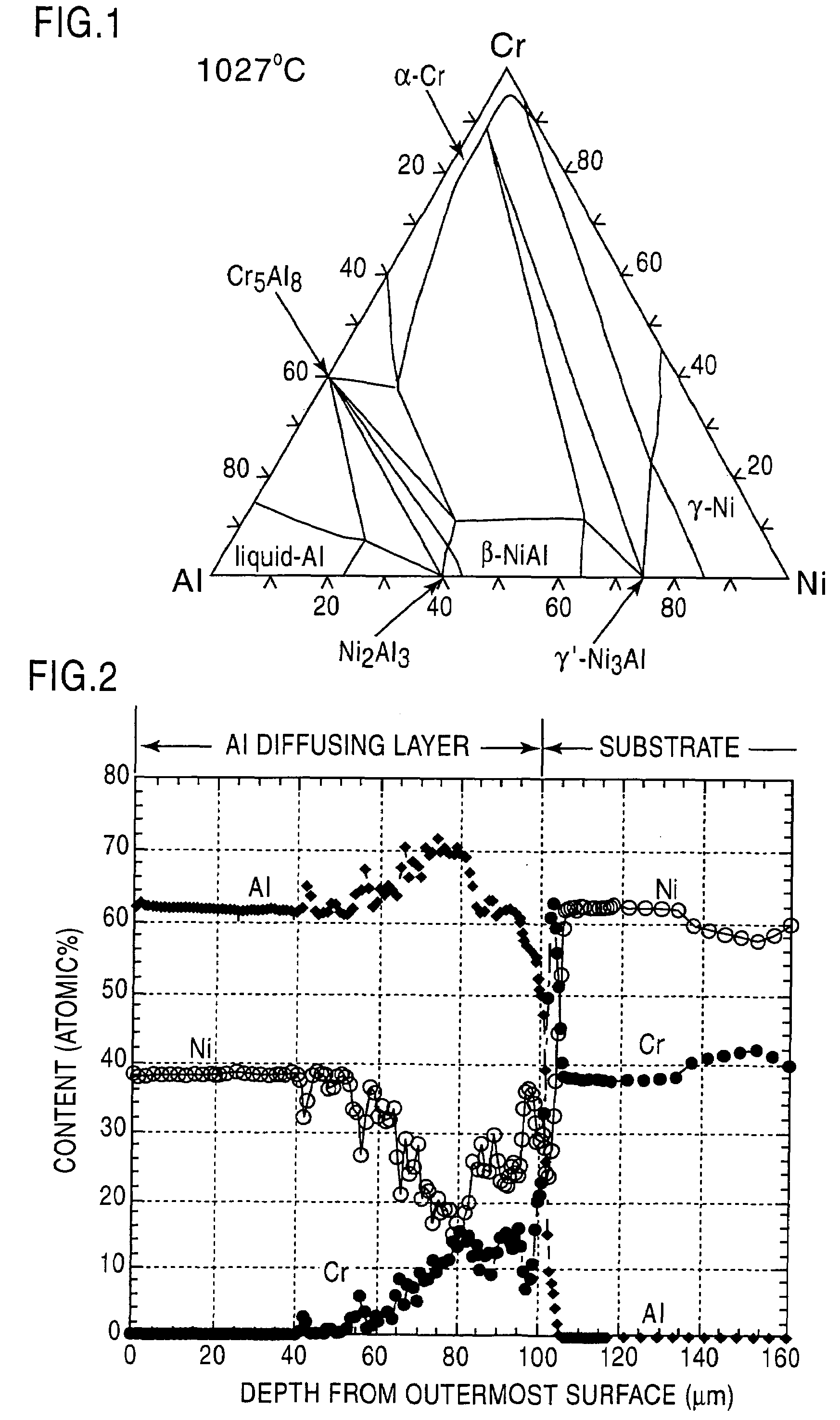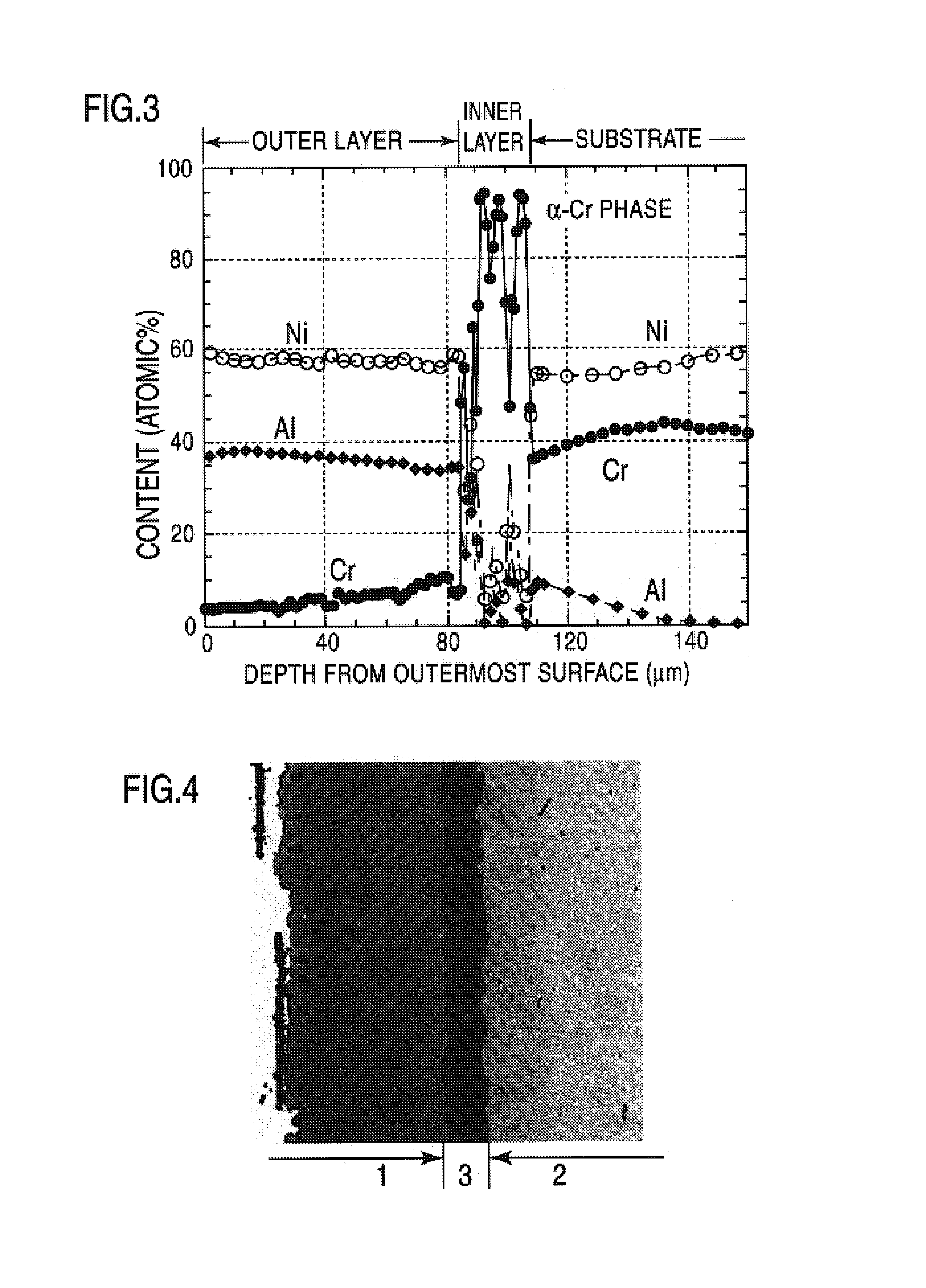Heat-resistant nickel-alloy composite excellent in high-temperature oxidation resistance
a nickel-alloy, high-temperature oxidation resistance technology, applied in the direction of superimposed coating process, manufacturing tools, soldering apparatus, etc., can solve the problems of reducing the high-temperature strength of heat-resistant materials, and rapid spreading of corrosion and oxidation of heat-resistant materials from defective portions over the entire surface. , to achieve excellent high-temperature characteristics and surface coating
- Summary
- Abstract
- Description
- Claims
- Application Information
AI Technical Summary
Benefits of technology
Problems solved by technology
Method used
Image
Examples
example
Example 1
[0052]A Ni—Cr alloy containing Cr at 40 atomic percent was used as a substrate. The Ni—Cr alloy was soaked in a Ni-plating solution containing 1.25 mol / l NiSO4, 0.19 mol / l NiCl2, and 0.65 mol / l HBO3 and plated at a current density of 5.5 mA / cm2 for 3.5 hours. A Ni layer having a thickness of 18 μm to 20 μm was formed on the surface of the Ni—Cr alloy. Then, the Ni—Cr alloy substrate was buried in a mixed powder of Al:NH4Cl:Al2O3=15:2:83 (mass ratio) and heated in an inert gas (argon) atmosphere at 800° C. for 2 hours for Al-diffusing treatment.
[0053]The content distribution of the elements across the thickness of the surface coat of the substrate subjected to the Al-diffusing treatment was measured. The result, as shown in FIG. 2, showed that the Cr content continuously decreased from the substrate surface toward the surface coat surface, and the Ni content continuously increased from the substrate to the Al-diffusing layer partway and then became constant toward the surfac...
PUM
| Property | Measurement | Unit |
|---|---|---|
| temperature | aaaaa | aaaaa |
| temperature | aaaaa | aaaaa |
| thickness | aaaaa | aaaaa |
Abstract
Description
Claims
Application Information
 Login to View More
Login to View More - R&D
- Intellectual Property
- Life Sciences
- Materials
- Tech Scout
- Unparalleled Data Quality
- Higher Quality Content
- 60% Fewer Hallucinations
Browse by: Latest US Patents, China's latest patents, Technical Efficacy Thesaurus, Application Domain, Technology Topic, Popular Technical Reports.
© 2025 PatSnap. All rights reserved.Legal|Privacy policy|Modern Slavery Act Transparency Statement|Sitemap|About US| Contact US: help@patsnap.com



